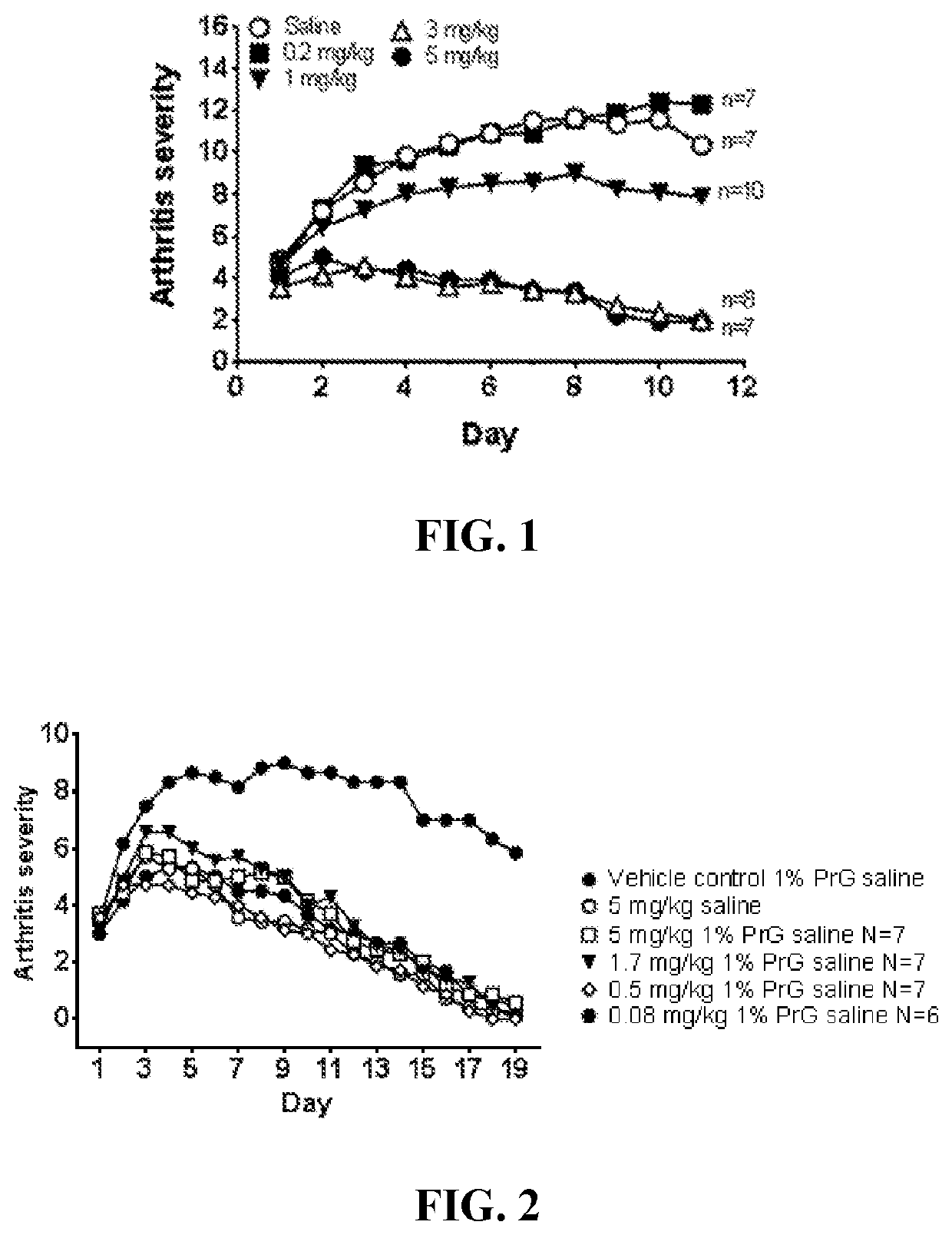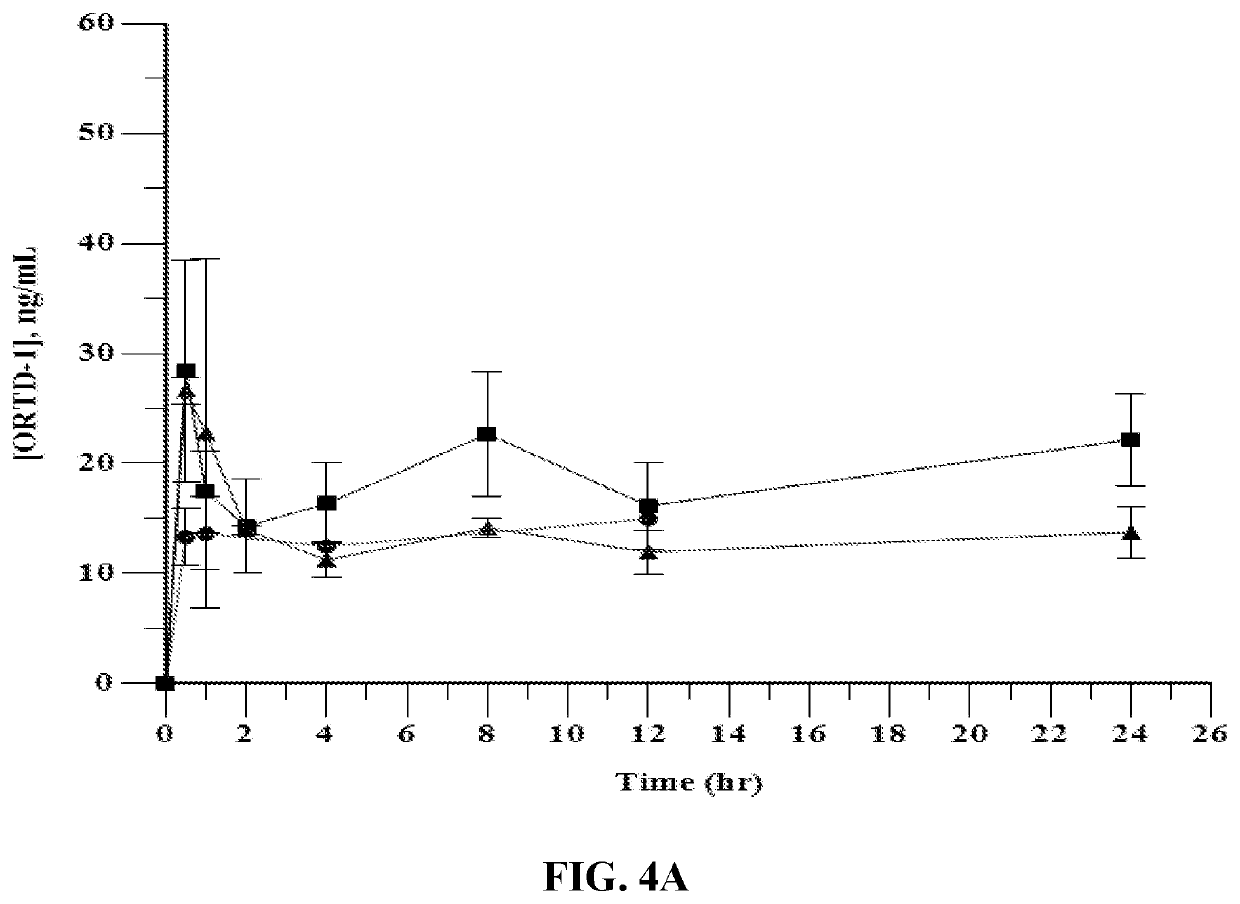Compositions and methods for enhancing systemic deliverability, tolerability, and efficacy of cationic macrocyclic peptides
a macrocyclic peptide and cationic technology, applied in the field of macrocyclic defensins, can solve the problems of prolonged and unresolved inflammation, tissue damage and septic shock, and damage to the inflammatory response itself, and achieves improved bioavailability, low viscosity, and scalable sterilization
- Summary
- Abstract
- Description
- Claims
- Application Information
AI Technical Summary
Benefits of technology
Problems solved by technology
Method used
Image
Examples
examples
[0053]Pharmacokinetic Studies in Rats
[0054]The θ-defensin RTD-1 was formulated in a mildly acidic buffer containing propylene glycol as described above, and administered subcutaneously to male and female Sprague-Dawley rats followed by determination of plasma levels of the θ-defensin. Rats received doses ranging from 1 to 4 mg / kg. Dose volume was held constant at 0.32 mL / kg; accordingly, concentration of the θ-defensin ranged from 3.125 to 12.5 mg / mL. Doses were administered three times per week for six weeks. Exemplary results are shown in Table 1 (which provides results for male rats) and Table 2 (which provides results for female rats). Table 1 and the following tables use the following acronyms:[0055]AUC0-Last Area under the plasma concentration versus time curve from time 0 (pre-dose) to the last measurable concentration time point[0056]CLast Last plasma concentration measured above the limit of quantitation[0057]Cmax Maximum plasma concentration[0058]MRTLast Mean residence tim...
PUM
| Property | Measurement | Unit |
|---|---|---|
| Length | aaaaa | aaaaa |
| Fraction | aaaaa | aaaaa |
| Fraction | aaaaa | aaaaa |
Abstract
Description
Claims
Application Information
 Login to View More
Login to View More - R&D
- Intellectual Property
- Life Sciences
- Materials
- Tech Scout
- Unparalleled Data Quality
- Higher Quality Content
- 60% Fewer Hallucinations
Browse by: Latest US Patents, China's latest patents, Technical Efficacy Thesaurus, Application Domain, Technology Topic, Popular Technical Reports.
© 2025 PatSnap. All rights reserved.Legal|Privacy policy|Modern Slavery Act Transparency Statement|Sitemap|About US| Contact US: help@patsnap.com



